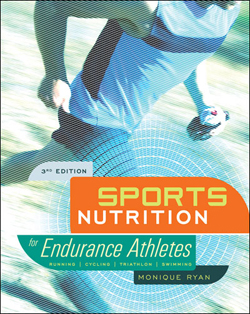Nationwide Teleconsulting • Sports Nutrition E-Programs


Got Thirst? How does the desire to drink fit into an endurance athlete’s race nutrition plan?
You have spent months preparing for a marathon, ironman race, and cycling event or race- is relying on thirst enough to perform your best?
Recently the third International Exercise-Associated Hyponatremia (EAH) Consensus Development Conference published an updated consensus statement. The Consensus Panel’s goal is to prevent EAH as this condition, in which blood sodium levels fall to below normal levels, can range from mild to serious to fatal. Keep in mind that the potential risk of asymptomatic EAH is low, with some documented estimates at negligible to as high as 18 to 25% in Ironman triathlons, and 0 to 12% in endurance cycling races. EAH mainly develops during or immediately following exercise. Most studies show that the risk for symptomatic EAH in endurance sports (there is some of the best data here) is less than 1% and of course much rarer.
So why is the issue of EAH and how to moderate drinking during racing events so polarizing? EAH can be fatal and preventing it is important. But keep in perspective that these guidelines are addressing the big picture of how to prevent EAH for all athletes including what the consensus statement refers to the “casual exerciser,” or the athlete least likely to have developed a paced hydration plan based on their own collected data and practice in training.
So should just thirst drive your fluid replacement during your next event? These guidelines may not result in much of a switch-up in strategy for the focused and passionate endurance athlete, but rather a perspective that only highlights the importance of being informed about the specific and individual fluid demands of your own race, and a strategy of caution for the more casual athlete who had not collected data, practiced a proposed paced hydration plan, and refined his or her own plan for race day.
The biggest risk factor for developing EAH is excessive fluid consumption during exercise whether from plain water or a sports drink. Because our thirst sensation is finely tuned to prompt drinking and prevent excessive dehydration, they maintain that drinking according to thirst is the most prudent way to avoid overhydration. Drinking in this manner can result in losing 2 to 3% of body weight – which the authors consider to be a mild level of dehydration and to have a minimal affect on athletic performance.
But is 2 to 3% dehydration over hours of exercise safe for an endurance athlete? And how does this affect your overall performance in a race that you have diligently been preparing for weeks and months? In addition, an endurance athlete’s hydration plan is intertwined with their fueling plan- and your fueling plan is one of the most important considerations for race day. Of course, these longer events also provide a ripe opportunity to overdrink. Slower competitors are also capable of drinking more fluid per hour than they actually sweat because their pace allows for more gulps and fluid stations are readily available- increasing the risk of developing EAH.
But what exactly what is excessive hydration or how much is too much? That depends on you and your own sweat rate. Knowing your sweat rate is information and just as you have a pacing plan for race day regarding what heart rate or level of exertion to maintain throughout the event based on your weeks of training and measured capabilities, you can also developed a paced hydration and fueling plan based on your own data and nutrition training. One of the paper’s authors in an editorial contends that another simple and protective strategy is to estimate hourly sweat losses, while using thirst as a gauge is for the “casual” exerciser. Even if you are aiming to just get in under a time cut-off, by their very nature, most endurance events should not be considered casual. If you are investing your resources and time in training for such an event, you should also invest your time in checking your sweat rate.
Check you sweat rate in various conditions in which you can train and compete. Training actually increases your sweat rate as you acclimatize in hotter weather as this mechanism allows your body to cool itself and maintain a safe core temperature. This strategy has been advised for the focused and informed endurance athlete for over a decade, though in my professional experience, not everyone is practicing this. Yes, it is not always convenient and requires an accessible weight scale, but it does provide really useful information overt time.
Gather some data. From there you can develop a hydration plan that is specific to when you start drinking (and fueling), and how to safely time and portion your fluid based on your own estimated sweat hourly losses in those weather conditions, for the projected duration of the event based on your paced and planned exercise rate, and the availability of fluids as dictated by fluid stations.
Of course another huge consideration is the amount of carbohydrate that you require per hour so that you can maintain your planned pace. Current guidelines are based on event duration and can range from 30 g to over 75 g per hour. This too requires thought, planning, and experimentation, as fueling optimally or otherwise can often make or break a race. You are developing not only a hydration plan, but a fueling and sodium replacement plan as well.
 Monique Ryan, MS, RDN, CSSD is author of Sports Nutrition for Endurance Athletes, 3rd edition and develops training and race nutrition programs for endurance athletes of all levels.
Monique Ryan, MS, RDN, CSSD is author of Sports Nutrition for Endurance Athletes, 3rd edition and develops training and race nutrition programs for endurance athletes of all levels.